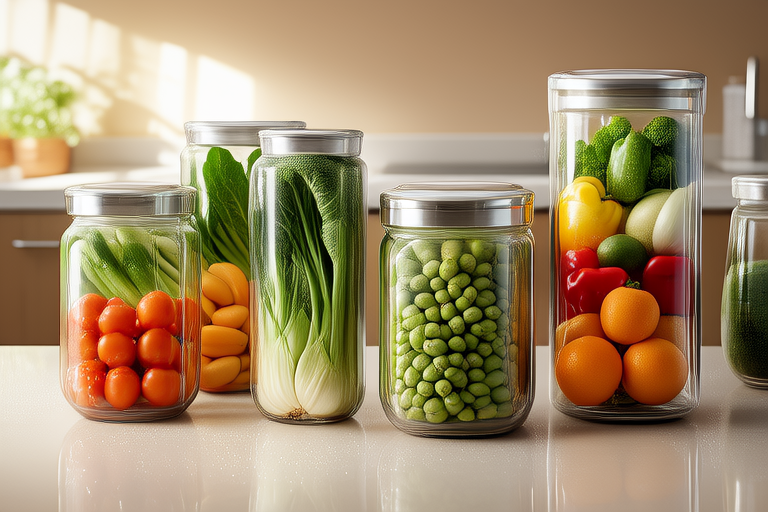Avoid Spoilage with These Proven Techniques for Short-Term Refrigerator Food Storage
Introduction: Why Proper Refrigeration Matters
Proper food storage is not just about saving money; it’s also about ensuring your health and safety. Freshness is key to enjoying meals, but it can be challenging to keep perishable items from spoiling too quickly. This is especially true when dealing with short-term refrigerator storage. By understanding the best practices for storing food in your fridge, you can extend the shelf life of your groceries, reduce waste, and maintain optimal nutrition. In this article, we will explore several proven techniques to help you avoid spoilage and make the most out of your refrigerator.
Understanding Temperature Zones in Your Fridge
The Importance of Optimal Temperature
The first step in effective refrigerator food storage is understanding the temperature zones within your fridge. Most modern refrigerators have different compartments that maintain varying temperatures. The crisper drawer at the bottom is typically the coldest part, ideal for fruits and vegetables. The middle shelves, which are slightly warmer, are perfect for dairy products like milk and cheese. The top shelf, being the warmest, is best suited for cooked foods and leftovers.
Proper Placement for Maximum Freshness
Placing your food in the right spot can significantly impact its longevity. For example, placing eggs in their designated carton on the middle shelf ensures they stay fresh longer than if left in the door, where temperature fluctuations occur more frequently. Similarly, keeping dairy products away from the door helps prevent premature spoilage due to warmer air entering when the door opens.
Packaging and Sealing Techniques
Choosing the Right Containers
One of the most effective ways to prevent spoilage is by using appropriate packaging materials. Glass containers are great for storing soups, stews, and sauces because they retain heat better and don’t absorb flavors. Plastic containers are lightweight and versatile, making them ideal for most leftovers. However, always opt for BPA-free plastics to avoid harmful chemicals leaching into your food.
Proper Sealing Methods
Sealing your food properly is crucial to maintaining freshness. Use airtight lids or vacuum-seal bags to remove excess air, which can cause oxidation and spoilage. For liquids, ensure that the container is sealed tightly to prevent spills and leaks. Labeling each container with the date of storage will help you keep track of how long items have been in the fridge.
Rotation and Organization Strategies
FIFO Method: First In, First Out
Implementing the FIFO (First In, First Out) method can help you avoid overstocking and wasting food. This involves rotating older items to the front of the fridge so they are used before newer ones. When unpacking groceries, place newly purchased items behind older ones to ensure proper rotation. This simple strategy can save you from throwing away expired or spoiled food.
Organizing Drawers and Shelves
Organizing your fridge can make it easier to find what you need while minimizing the risk of cross-contamination. Group similar items together—such as all dairy products or various types of vegetables—and use dividers to keep everything neat. Regularly cleaning your fridge also helps maintain hygiene and prevents odors from lingering.
Case Study: Saving Leftovers
Storing Cooked Meals
Leftovers can be a great way to save time and money, but they require careful handling to stay safe and tasty. After cooking, allow hot food to cool down to room temperature before placing it in the fridge. This prevents sudden temperature changes that could affect the internal temperature of the fridge. Once cooled, transfer the food into airtight containers and label them with the date.
Recommended Storage Times
Different foods have different recommended storage times. For example, cooked meat should be consumed within three to four days, while casseroles and pasta dishes can last up to five days. Vegetables and fruits should be eaten within two to three days after cutting or preparing. Always check for signs of spoilage such as off-smells, discoloration, or mold before consuming stored food.
Conclusion: Putting It All Together
In conclusion, proper refrigerator food storage is essential for maintaining the quality and safety of your groceries. By understanding temperature zones, choosing the right packaging, sealing food correctly, and organizing your fridge efficiently, you can significantly extend the shelf life of your food. Implement these techniques to avoid spoilage and enjoy fresher, healthier meals. Remember, the key is consistency—make it a habit to follow these guidelines every time you store food. With a little effort, you’ll see noticeable improvements in both your grocery budget and overall kitchen management.
